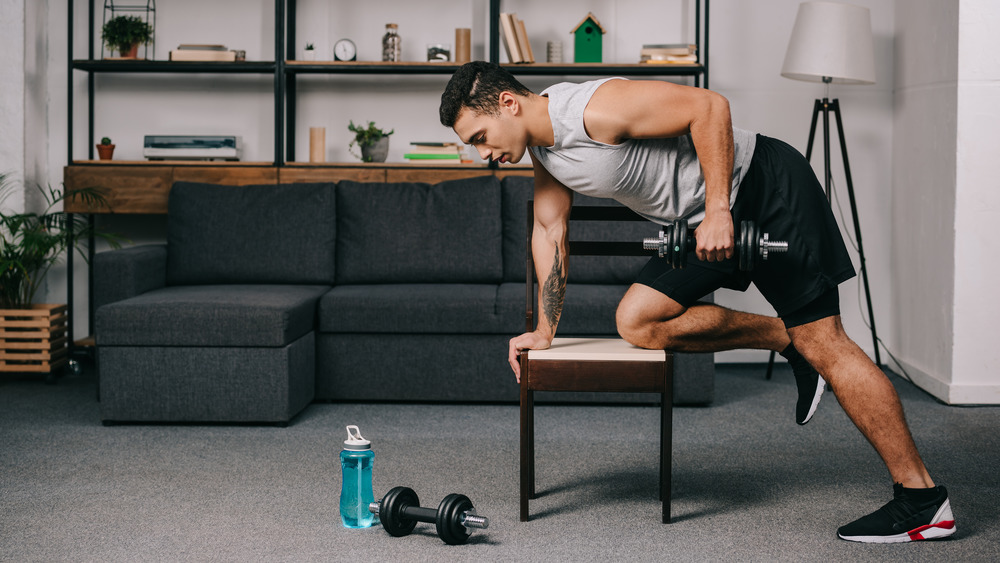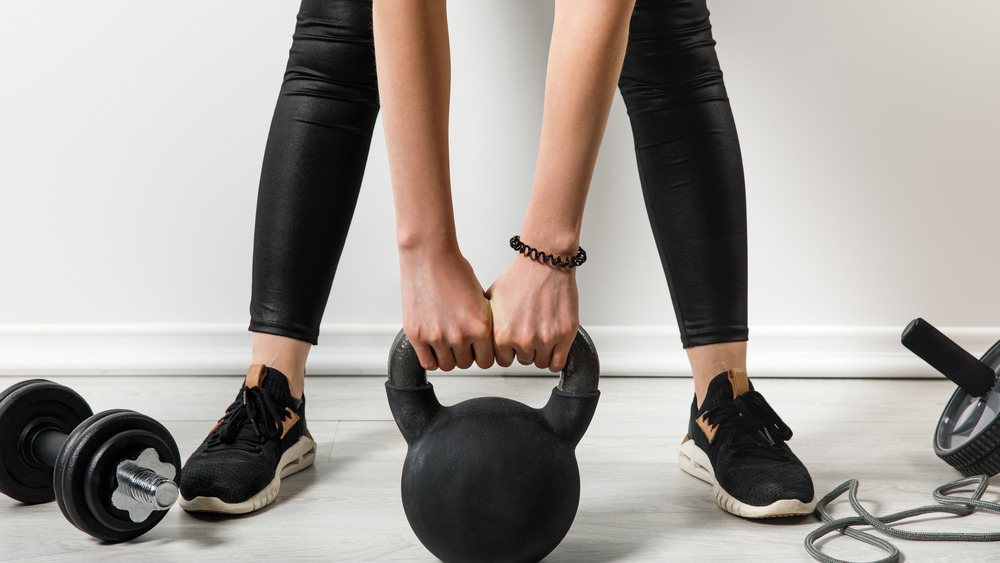Why You Should Think Twice Before Lifting Weights At Home
Strength training is a great way to get in shape, build muscle, and improve your body's ability to burn fat. But when you start adding weights to an at-home workout, you do need to proceed with caution, especially if you're new to strength training.
Lifting weights that are too heavy, or lifting using the wrong muscles — like lifting a dumbbell up using your back instead of your legs — can lead to injury. It's important to start with weights that match your current ability level (via Harvard Health Publishing). If something feels too hard or heavy to lift, dial it back and go lighter.
As you progress with your strength training, though, you'll want to increase the weights that you're using: Another common mistake that new weight lifters make, especially at home with limited equipment, is that they never go heavier with their weights (via CNet). Adjustable weights are a great addition to a new weightlifter's equipment setup, since you can gradually increase the weights, and adjust for different exercises.
How do you learn to lift weights at home?
"Many people prefer to do their strength program at home," strength and athletic trainer Tom Iannetta told the Cleveland Clinic. "So before beginning, consider consulting with a strength and conditioning specialist who can help you develop a safe program that uses proper lifting techniques."
Form matters when weight lifting, and subtle changes can make a big difference when it comes to which muscles are firing while you go through your workout. Because of this, if you're new to strength training, you might be best served working with a personal trainer — many are available for virtual sessions as well as in-person — to learn proper form and technique, and make any corrections. If you can lift with good form, you'll be more efficient, and you'll prevent injury (via the Cleveland Clinic). A trainer can also help you set up a training program so that you're not doing the same exercises every day.

